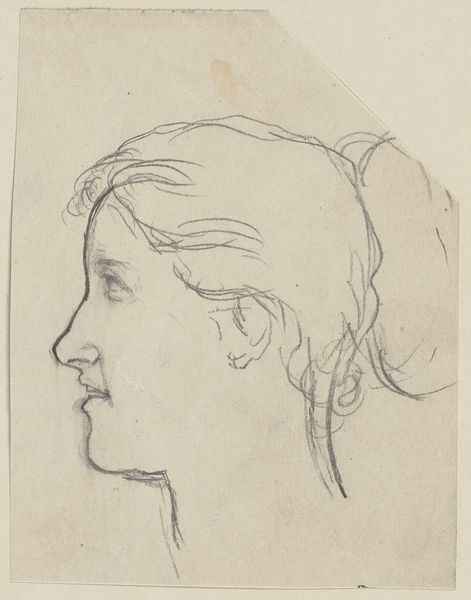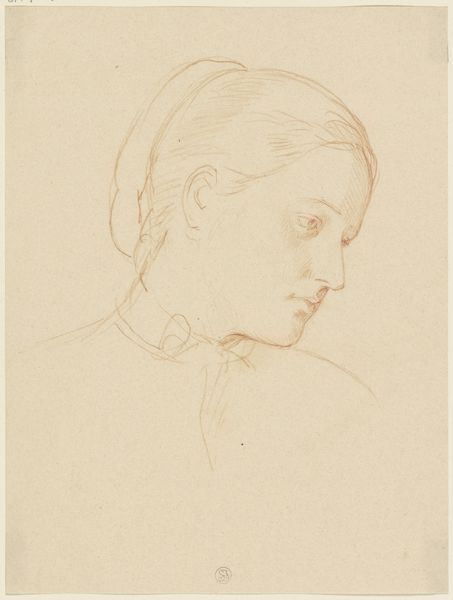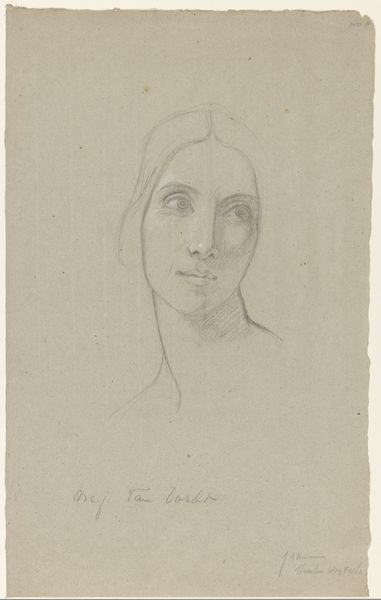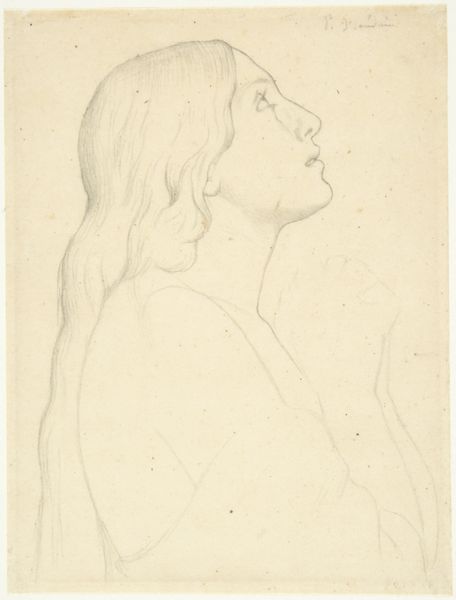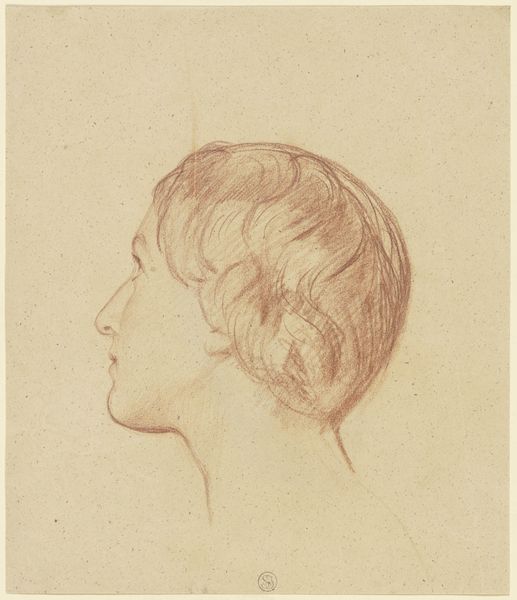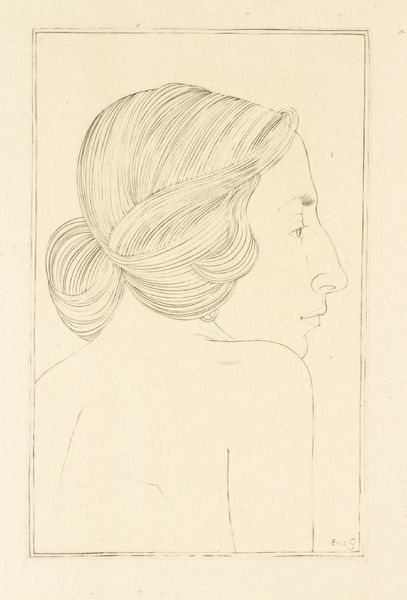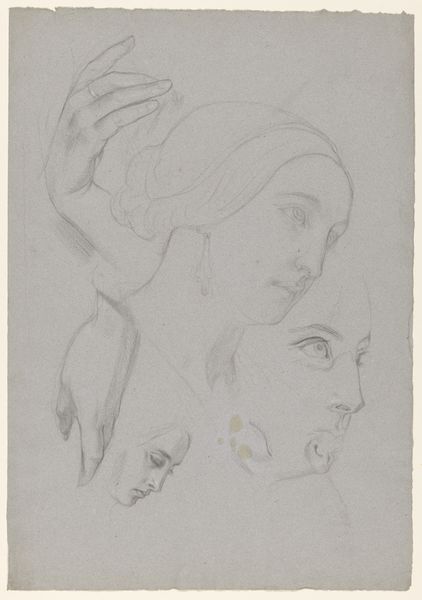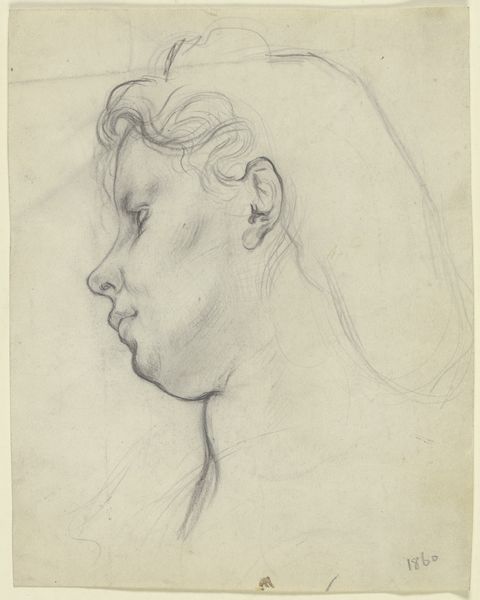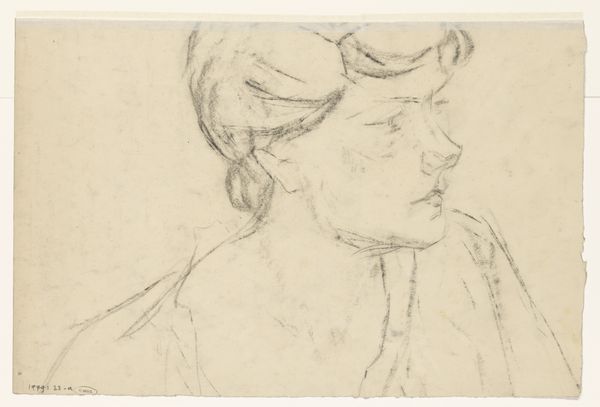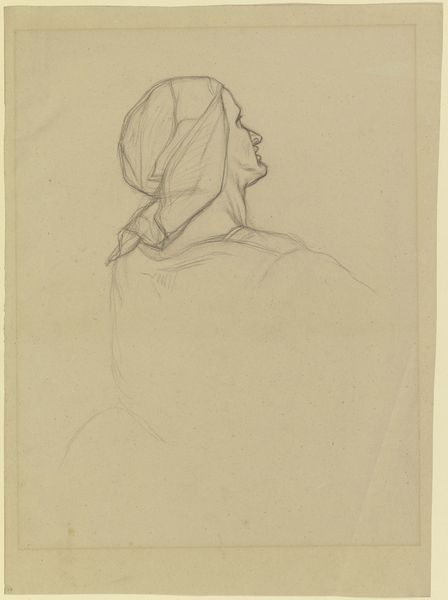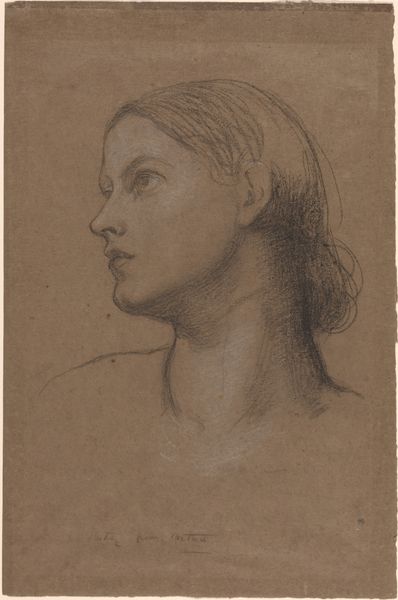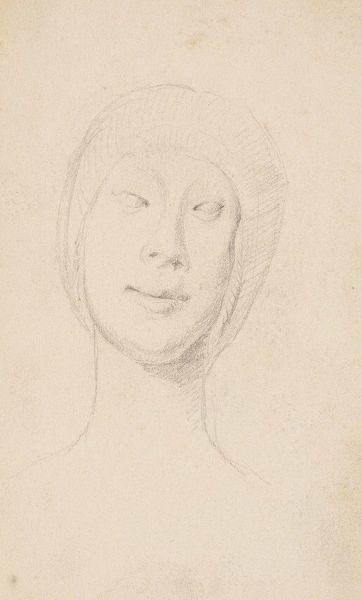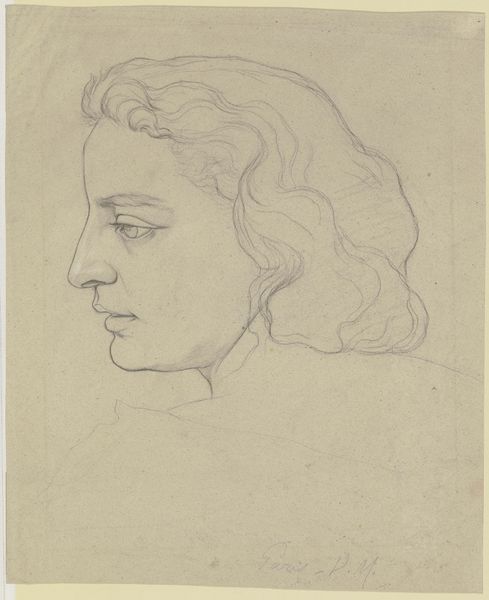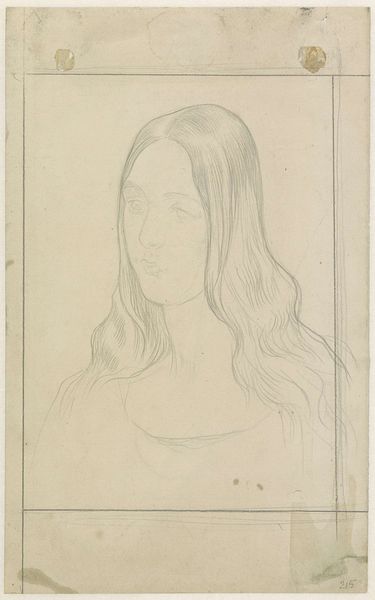
Studie efter Francesco Lauranas buste af Eleonora d'Aragona i museet i Palermo. Profil t.h. 1893 - 1895
drawing, paper, graphite
portrait
drawing
paper
graphite
realism
Dimensions: 169 mm (height) x 97 mm (width) (bladmaal)
Editor: Here we have L.A. Ring’s "Study after Francesco Laurana’s bust of Eleonora d'Aragona," created between 1893 and 1895. It's a graphite drawing on paper. The delicate lines give the portrait an ethereal quality. What strikes you most about this work? Curator: What I find compelling is the drawing's engagement with materiality at several levels. We have Ring, a Danish artist, choosing to render a three-dimensional sculpture of a historical figure—Eleonora, whose likeness was originally captured in marble—using graphite on paper. What does it mean to reproduce an image across mediums and historical contexts? Editor: I guess it's about accessibility, or perhaps reverence? Ring is studying a masterwork, but how does the act of copying, with different materials, change the meaning? Curator: Exactly! Think about graphite versus marble. Graphite is readily available, easily worked, and relatively inexpensive. Marble, conversely, is quarried, requiring skilled labor and significant expense. Laurana's marble bust was commissioned, signaling Eleonora’s status and wealth. Ring's graphite study, on the other hand, democratizes the image, making it reproducible and accessible to a wider audience. Consider, too, Ring’s choice of paper – a mass-produced commodity in his time. Editor: So the change in materials reflects a shift in social context and consumption, stripping away some of the original artwork’s aura? Curator: Precisely. It transforms the artwork into a commodity itself. Also, the incomplete, sketch-like quality of Ring’s work directs attention to the artistic process – the labor involved in observing and representing form. It’s a study, not a finished product. Editor: I never considered how much the choice of materials shapes our understanding of a piece! Curator: Absolutely. By examining the materials and the means of production, we can uncover layers of meaning beyond just the surface representation. Editor: That's fascinating. It makes me appreciate Ring's work on a whole new level. Curator: It encourages us to look beyond the surface and to think critically about how art is made, distributed, and consumed within specific historical and social contexts.
Comments
No comments
Be the first to comment and join the conversation on the ultimate creative platform.
